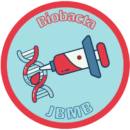Vol. 2 No. 1-2: Interleukin-6 levels in early and late rheumatoid arthritis: their comparison and correlation with clinical and laboratory indicators of disease activity.
By: Nada Hussein Abdelhakim1, Al Shimaa Mamdouh2 , Othman Ali Othman*1
1-Chemistry Department (Biochemistry Division)-Faculty of Science- Minia University-61519 ElMinia –Egypt.
2-Rheumatology, Rehabilitation, and Physical Medicine Department -Faculty of Medicine -Minia University- ElMinia-Egypt
Abstract
Background: An inflammatory condition called rheumatoid arthritis (RA) is characterized by persistent inflammation that damages the cartilage and joints. It can result in different levels of osteoarthritis and cause varying degrees of disability and it has been discovered that RA is significantly influenced by interleukin-6 (IL-6). As demonstrated by numerous clinical studies, Tocilizumab, a humanized anti-IL-6 receptor monoclonal antibody, and the first-in-class IL-6 inhibitor, has demonstrated exceptional efficacy in RA. Aim: We aimed to evaluate the level of IL-6 for prediction, diagnosis, and staging for rheumatoid arthritis patients, and reducing joint discomfort and swelling is the main goal of rheumatoid arthritis treatment. Material and methods: The study included 105 patients (aged 20 – 74 yr) divided into three groups. Group I: Involved 30 healthy controls, Group II: involved 15 patients with early RA, and Group III: involved 60 patients with late RA. Routine clinical tests such as Alt, Ast, Creatinine, Urea, Tlc, Hgb, Plt, RF, ESR, and CRP were assayed for all patients. In addition, serum Interleukin-6 levels were quantified using sandwich ELISA. The absolute values of investigated markers were statistically analyzed using the SPSS program. Results: The mean IL-6 level was (8.75 ± 0.56 pg/ml), (17.76 ± 5.32 pg/ml) and (32.71 ± 10.08 pg/ml) for G1, G2 and G3 respectively. Our study found the levels of IL-6 in the serum of patients with late RA and early RA were extremely significant than the normal group (p=0.0001) Conclusion: IL-6 has a greater sensitivity and specificity than other inflammatory markers, making it useful for early detection of RA.
Interleukin-6 levels in early and late rheumatoid arthritis their comparison and correlation with clinical and laboratory indicators of disease activity